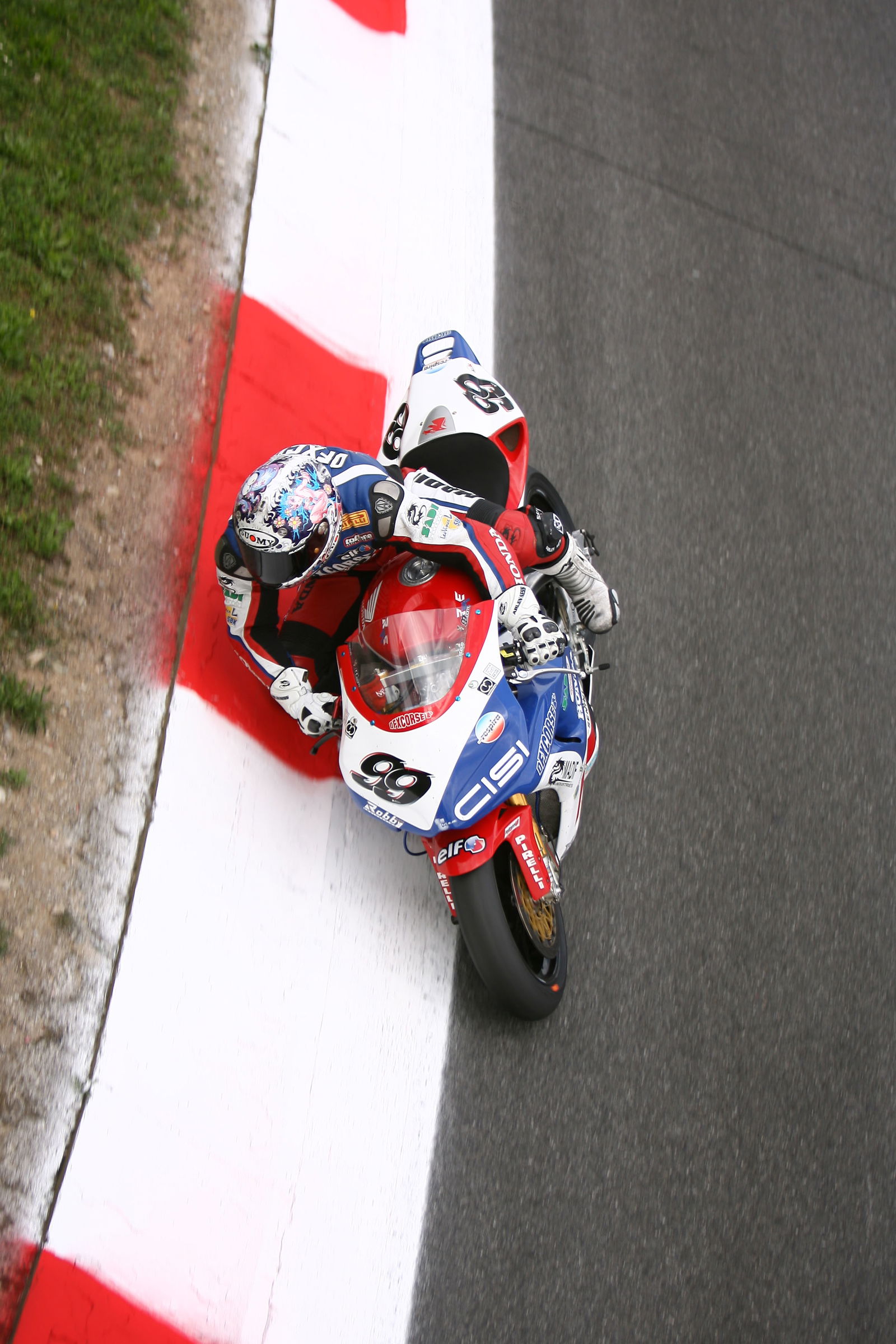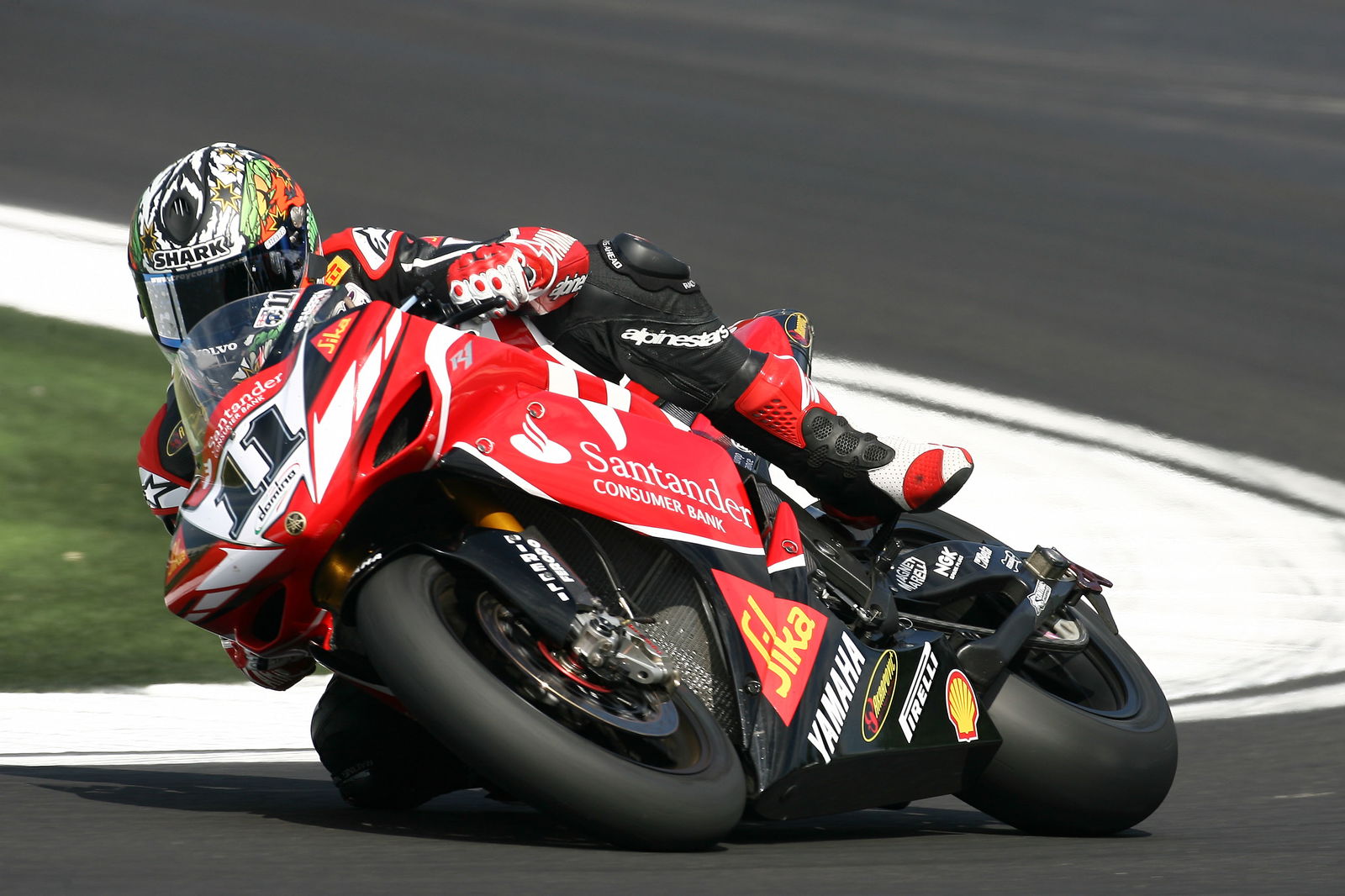1200cc handicap system revealed.
As previously reported, an agreement was reached in mid-June to allow Ducati - and any other manufacturer - to race 1200cc twin-cylinders against the 1000cc four-cylinders from next season. However, the 1200s will have higher a minimum weight, air restrictors plus standard con rods and pistons (or kit pistons of same price) to balance their larger engine size.
The 1200s will initially weigh 6kg more than the 1000s and have 50mm air restrictors fitted - but both those values will be 'updated, if needed, during the championship by a system analysing the race points obtained'.

As previously reported, an agreement was reached in mid-June to allow Ducati - and any other manufacturer - to race 1200cc twin-cylinders against the 1000cc four-cylinders from next season. However, the 1200s will have higher a minimum weight, air restrictors plus standard con rods and pistons (or kit pistons of same price) to balance their larger engine size.
The 1200s will initially weigh 6kg more than the 1000s and have 50mm air restrictors fitted - but both those values will be 'updated, if needed, during the championship by a system analysing the race points obtained'.
The exact details of that system - which will see weight varied first and air restrictor size only if the weight limit has reached a minimum or maximum - have now been revealed.
The first performance review will take place after three events and compare how the top two 1200cc machines have scored relative to the top two 1000c machines - and which type of bike is leading the world championship.
The full details are as follows:
"The minimum weight may be reduced twice by 3 kg to a maximum reduction of 6 kg, or increased once and by 3 kg maximum," read an FIM statement. "If this measure proves to be insufficient, then a second handicap will be applied: the size of the intake ports will be changed by means of air restrictors."
Minimum weight adjustments
"The minimum weights will be increased or decreased in steps of 3 kg according to the following procedure:
"1. By taking the race points of the riders of the best two 1000cc 4 cylinders and best two 1200cc 2 cylinders in each race an average will be calculated after every event, the 'event average'.
"If there is only one finisher from one of the configurations, the 'event average' will be calculated from the first rider of each configuration in each race.
"No 'event average' points will be calculated if one of the configurations has no finishers. The 'event average' will then be calculated, based on the results of the other race from the same event. If neither race has any finishers from one of the configurations, the event will not be considered.
"2. 'Wet' races (as declared by the Race Director) are not taken in account for the calculation of an 'event average'.
"3. After 3 events, the average value of the 'event averages' of each configuration will be calculated. The score of the 1000cc 4 cylinders and the score of the 1200cc 2 cylinders will be compared as follows:
"o Should the average value of the 'event averages' over 3 events favour the 1200cc 2 cylinders by more than 5 points, and if a rider of a machine with this configuration is leading the riders' Superbike World Championship standings at that time, then the minimum weight of all 1200cc 2 cylinders will be increased by 3kg. The upper limit is 171 kg.
"o Should average value of the 'event averages' over 3 events favour the 1000cc 4 cylinders by more than 5 points, and if a rider of a machine with this configuration is leading the riders' Superbike World Championship standings at that time, then the minimum weight of all 1200cc 2 cylinders will be reduced by 3 kg. The lower limit is 162 kg.
"If the minimum weight is not updated, then the results of three more events will be considered, and a new average value of the 'event averages' will be calculated over six events and so on, over multiples of three events, until the points gap of the average value of the 'event averages' from the last minimum weight update is higher than 5.
"The Superbike Technical Director will inform all the teams about the possible minimum weight adjustments, within 24 hours from the end of the last event (the last meeting of the International Jury) where the average value of the 'event averages' was calculated. The new minimum weight adjustments must be applied from the first following event."
"The ballast must be made from solid metallic piece/s, firmly, securely connected, either through an adapter or directly to the main frame or engine, with minimum 2 steel bolts (min. 8 mm diameter, 8.8 grade or over).
"Fuel in the fuel tank can be used as ballast. Nevertheless, the verified weight may never fall below the required minimum weight."
Air Restrictor adjustment
"The minimum air restrictor size is increased or decreased in 2 mm steps in diameter of equivalent circular area, according to following procedure:
"1. - If the minimum weight of the 1200cc 2 cylinders configuration has reached the lower limit of 162 kg and,
"- if the resulting gap in the average value of 'event averages' is more than 5 points in favour of the 1000 cc 4- cylinders and,
"- if a rider of a 1000cc 4 cylinder is leading the riders' Superbike World Championship standings at that time, then the initial air restrictor size of the 1200cc 2 cylinders will be increased by one size, to a ? 52 mm (or the equivalent area 2123.7 mm2), or as a last step, without any air restrictor.
"2. - If the minimum weight for 1200cc 2 cylinder configuration has reached the upper limit of 171 kg and,
"- if the resulting gap of the average value of 'event averages' is more than 5 points in favour of the 1200 cc 2 cylinders and,
- if a rider of a 1200cc 2 cylinder is leading the riders' Superbike World Championship standings at that time, then the initial air restrictor size of the 1200cc 2 cylinders will be reduced by one size, to a ?48 mm (or the equivalent area 1809,6 mm2), or, as last step, to a minimum of ?46 mm (or the equivalent area 1661.9 mm2).
"If the air restrictor size is not updated, then the results of three more events will be considered, and a new average value of the 'event averages' will be calculated over six events and so on, over multiples of three events, until the points gap of the average value of the 'event averages' from the last air restrictor size update is higher than 5."


